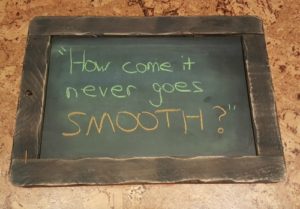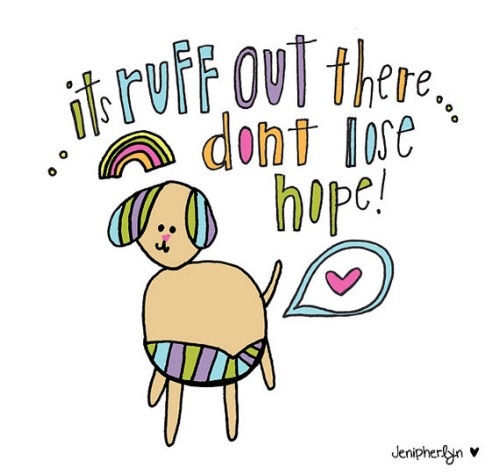“Never goes smooth. How come it never goes smooth?”
-Captain Mal Reynolds, Firefly
That’s the line I often think to myself when something breaks, someone has a fever, something was forgotten, someone makes a huge mess, someone turns a series of should-be-fast tasks into an eternity of kiddo-dawdling when I really need to get everyone out the damn door. Arrrrgh! It’s one thing after another. Can’t I have one day– just one day!– where things go right? PLEASE?

Note: I’m not talking about the big stuff here. When the huge hard things happen, we meet that as we must. Sometimes we need to drop everything and massively shift priorities. We do what we must to get through the big challenges in life.
What I am talking about now is how I can get thrown off by the ubiquitous small-to-medium things going wrong. The flocks of tiny daily derailments, and the medium-sized jolts that still happen with depressing frequency.
These things can really get me off kilter when I seduce myself into planning with a sweet bubbly mix of optimism, expectations and lofty goals, expecting smooth sailing as the default– only to have messy real life, the actual default, show up instead. (Again. Like usual. Because, well… real life is real life.)
When bumps hit, we must absorb their impact somewhere. And real life tries day after day to bump my creative work right off my plate into a splatty mess on the floor, right next to my toddler’s breakfast food that I haven’t had time to wipe up.
Letting my writing time go to handle a minor bump or two? Or writing through it but letting my sleep and basic self-care go instead? No big deal if it happens once in a while. But doing it all the time leads to a pattern in which certain work simply does not get done. Because slightly bumpy days? Are actually most days, and if I don’t make my writing happen most days, well… I’m sure you can see where that leads. (Hint: not much of anywhere.)
My number one strategic bump absorption technique involves putting two kinds of time chunks on my calendar. The first is dedicated core time for my writing + coaching. The second, equally important chunks are open, empty space.
That overflow space can be filled up with handling minor crises if things go amiss, or it can also be filled with extra creative work or other things I’d like to get done if things go well. Having that space for potential bump management means that I can safeguard my creative work and keep showing up for that.
I can’t plan for the individual bumps, as I never know when they’ll happen or what form they’ll take. I have to plan for bumpiness in general. Holding space and building buffers is how I do it. There are surely other ways, too. What matters is noticing if the entropy of bumpiness has made a pattern of siphoning off the time + energy your creative work is calling for… and finding a way to create new patterns instead.
It doesn’t always work. Some days are easier, and some days are harder. Our ability to adroitly deal with bumpiness will, of course, be bumpy too. There are certainly days where dropping some creative work time ends up being the best choice out of an array of not-great choices. And that’s okay.
Perfection’s not the goal– the goal is overall consistency in a way that’s compatible with real life, not idealized life. Some derailment is normal, but if you create conditions that allow you to show up more than you don’t show up, you’ll make progress.
Bumps aren’t the exception– they’re the norm, as our creative work must also be our norm. Don’t wait for smoothness; you’ll have a long wait coming. To make creative work happen, we’ve got to find ways to show up on bumpy days.

